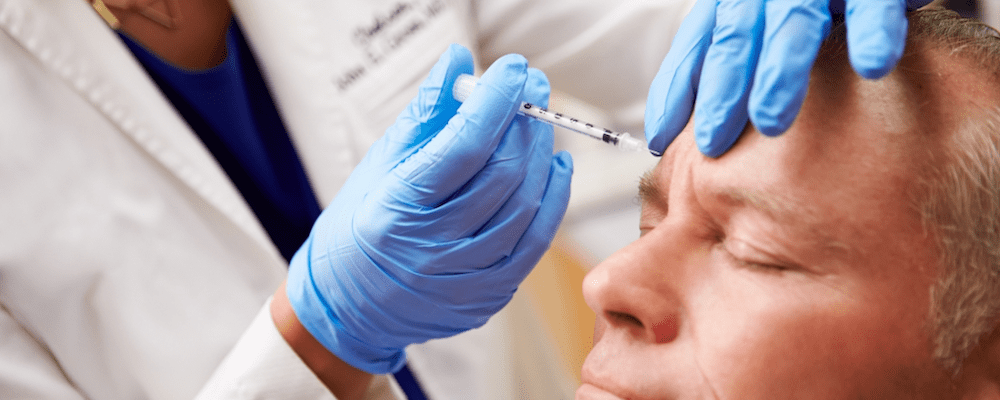Botox for Headaches, Teeth Grinding and TMD
Our Location
10465 E. Pinnacle Peak Pkwy, Suite 103
Scottsdale, AZ 85255
480-515-6209
Do you suffer from temporomandibular joint (TMJ) disorder (TMD)? Do you often experience headaches? Have you been diagnosed with bruxism, also known as teeth grinding? We understand that these conditions can be painful and disrupt your day-to-day life, which is why we offer Botulinum Toxin (Botox) for therapeutic use.
Botox injections are more commonly known for their wrinkle erasing effects. However, Botox injections offer a therapeutic use that can help relieve painful conditions that are often triggered by the muscles of the jaw: TMD, headaches and bruxism to name a few. Let’s take a closer look at how Botox can help relieve your craniofacial pain.
Botox for TMD and Jaw Pain
Many studies have been conducted around the use of Botox for TMD and jaw pain relief. In fact, it has been found that Botox treatments decrease pain and increase mouth movements for up to three months following treatment.
It is important to note, though, that Botox should be used in addition to other TMD therapies. Those include night guards and physical therapy, among others. However, Botox alone has still been shown to help muscles relax. After receiving Botox treatment for TMD, you may have reduced frequency and intensity of headaches, feel less anxious, will sleep better and you can even protect your teeth from effects of bruxism.
Botox for Headaches and Migraines
There are between about 1% and 2% of the population who suffer from chronic migraines. What does chronic mean? It means they get migraine-like headaches about 15 or more days every month for at least three months. Medications might help when a migraine occurs, but it does not always help. There are also treatments to prevent migraines from happening.
With Botox, the goal of treatment for both headaches and migraines is to block the nerve activity in the muscles and temporarily paralyze them. This helps minimize and reduce pain. As an FDA-approved treatment, it can potentially help prevent migraines. Additionally, Botox can lower the number and severity of your migraine attacks. If you have tried other migraine and headache treatment without success, Botox may be a good option to help relieve your pain.
Botox for Bruxism
Teeth grinding is a growing dental problem that can lead to further complications, including facial pain, headaches, migraines and dental pathology. Using Botox is safe and effective with little down time or side effects when treating bruxism or teeth grinding/clenching. When Botox is injected into the temporalis and masseter muscles, it helps to relieve pain experienced from tension headaches and migraines that are the result of clenching of the jaw or teeth grinding.
When receiving Botox for bruxism, a small amount will be injected into the muscles of your jaw. You may even receive injections in the frontalis and temporalis muscles. This is dependent on your individual needs, which will be discussed with your dentist. The injections will help to reduce clenching and grinding as well as any accompanying tension and aches in your head. Typically, Botox will begin working about one to
Contact Dr. Sara Vizcarra today to learn more about how Botox can help reduce your pain, whether it is from teeth grinding, TMD or headaches and migraines.

